cat whiskers, goya, jasmine tea, mugwort, okinawa, sanpin tea, turmeric
Jasmine Tea and More: Six Okinawa Teas to Savor!

Anna Ayvazyan
Posted on July 20, 2023
Share:
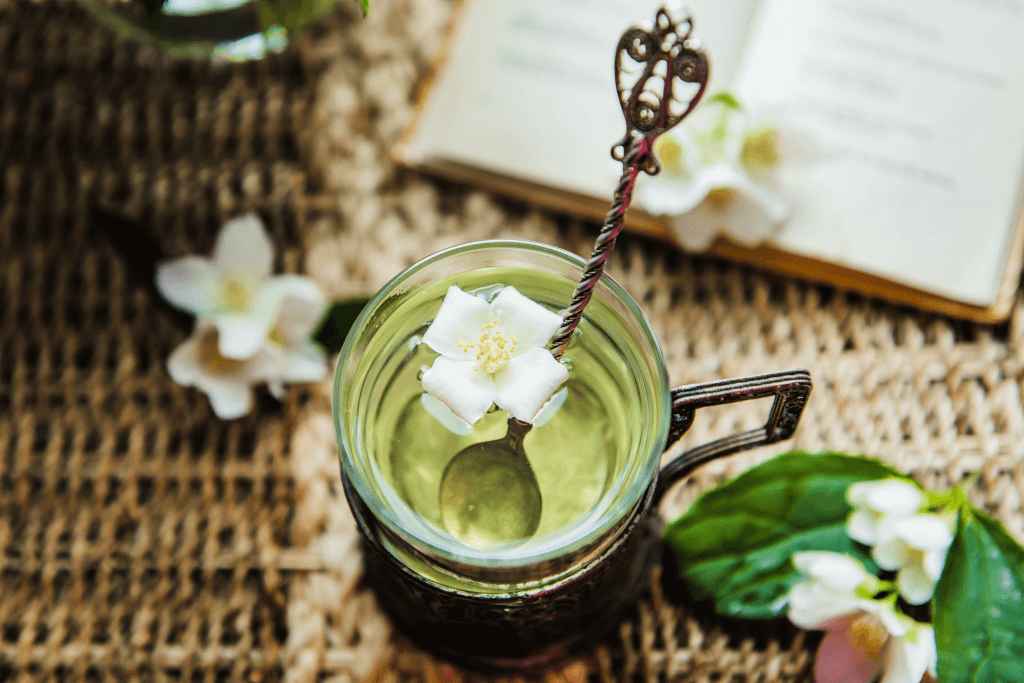
Jasmine, or sanpin tea, is a popular beverage among the people of Okinawa, who are well-known for their long life expectancy. Many people believe that the Okinawan diet is the reason for their longevity. In addition to jasmine tea, Okinawa also offers guava tea, mugwort tea, turmeric tea, goya tea, and cat whiskers tea.
There is no mistake that tea is a very healthy drink. People have been drinking tea for centuries as a remedy for sickness or misalignments. Tea made its way to Japan from China in the 700s. While Kyoto and China are famous for producing most Japanese tea, Okinawa cultivates its unique type of tea. The area also has its Ryukyuan tea ceremony, unique from typical Japanese or Chinese tea ceremonies.
Sanpin Tea
Sanpin tea, or sanpin-cha, has a jasmine aroma, leading many people to think it is simply jasmine tea. However, some researchers in Osaka say sanpin and jasmine tea are slightly different. Sanpin tea is a blend of fermented tea and jasmine, whereas jasmine tea uses a green tea blend. It originates from the trade era between the Ryukyu Kingdom and China.
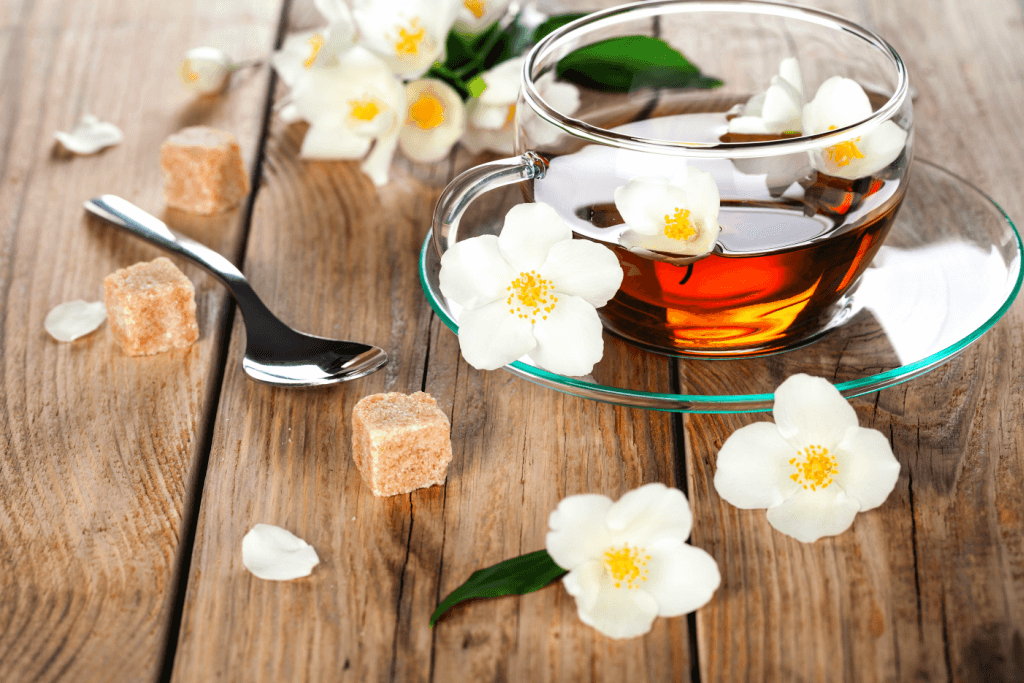
If you visit Okinawa, you will also see Sanpin tea available to buy in bottle form! It rivals major Japanese green and oolong tea brands in convenience stores and supermarkets. You can also buy tea leaves and brew it yourself – with hot water for approximately two minutes.
Guava Tea
Guava tea, or guava-cha, comes from guava leaves, one of Okinawa’s top three medicinal herbs. They have many nutritional benefits and are rich in vitamins and minerals. Its tea form helps with sugar absorption and regulates blood glucose levels. Tea is trendy amongst dieters since it helps with their metabolism.
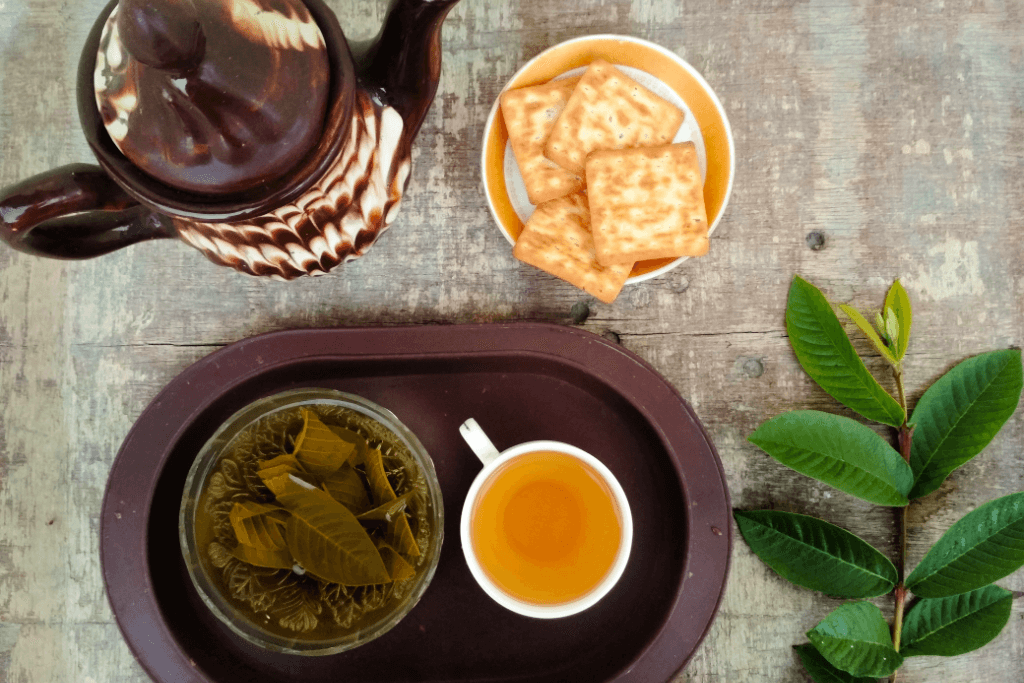
According to historical records, guava tea came to Okinawa during the Taisho period. The taste of guava tea is slightly fruity. Fermented guava tea is also a popular drink in Okinawa. For optimal taste, you should brew these leaves for approximately 3-10 minutes.
Mugwort Tea
Mugwort, or yomogi, is a popular tea for keeping the body warm. In Okinawa, people often use mugwort to make traditional Japanese sweets like yomogi-mochi (mugwort rice cake) and add it to Okinawa Soba. Mugwort was a standard herbal medicine for centuries due to its high Vitamin C and folic acid content. It’s also famous for its unique blend of sweet and sour flavors.
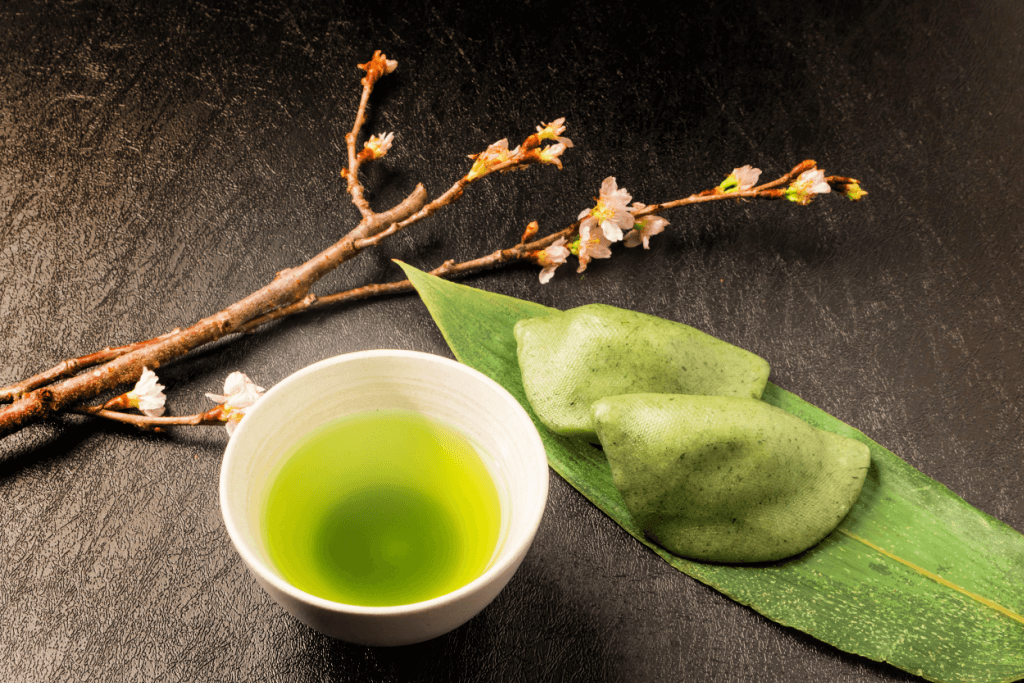
In addition to its warming properties, people recommend mugwort tea to improve gynecological health. Not to mention, it can aid in alleviating cramps, regulating menstrual cycles, and promoting hormonal balance. For the best taste, steep the tea for three minutes.
Are you interested in enjoying even more Okinawa tea? Try Sakuraco! Sakuraco delivers traditional Japanese snacks, teas, sweets, and snacks from Japan to your door every month so that you can enjoy Japan’s taste anywhere!
Turmeric Tea
Turmeric tea, or ukon-cha, is one of the most critical aspects of the Okinawan diet. The tea arrived via traders visiting South East Asia and China. While many South East Asian countries have turmeric drinks, Okinawa innovated it by making tea from the root.
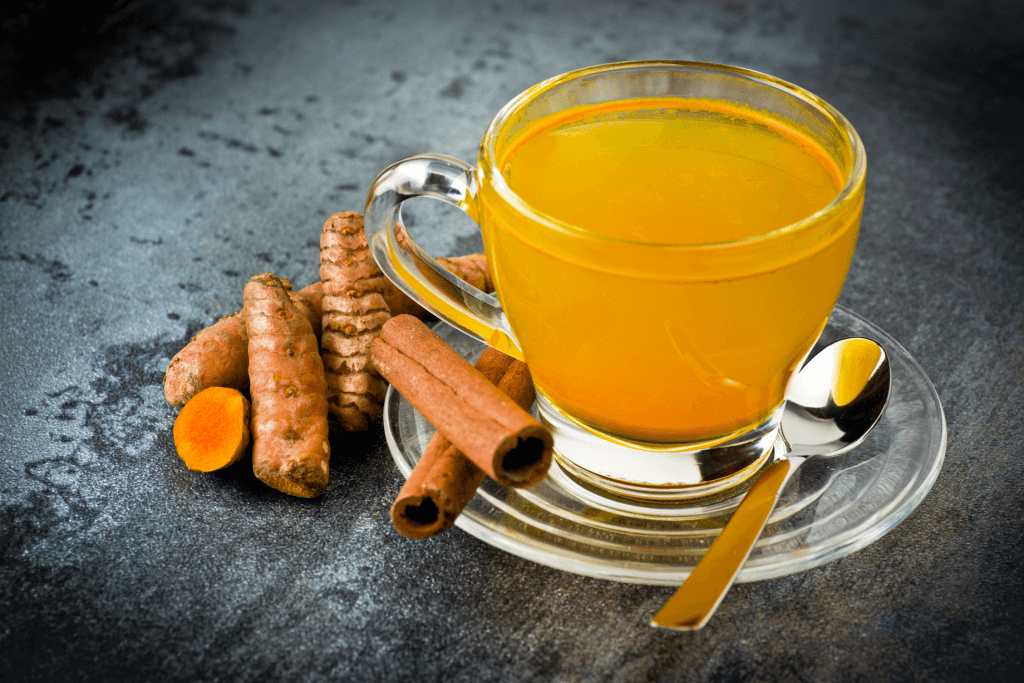
Fermented turmeric tea is also a popular variation as it reduces the bitterness of the turmeric flavor. Generally, the tea usually comes in packs; if you want to infuse it with 1.5 liters of water, it’s best to use two packs. You can steep turmeric powder for a few minutes to enjoy it hot.
Goya Tea
Goya, also known as bitter melon in English, is one of the most well-known vegetables in Okinawa. It is also typically referred to as a summer superfood due to its enormous health benefits. Goya is a powerful detoxifier, helps maintain blood sugar levels, and is an excellent source of Vitamin C.
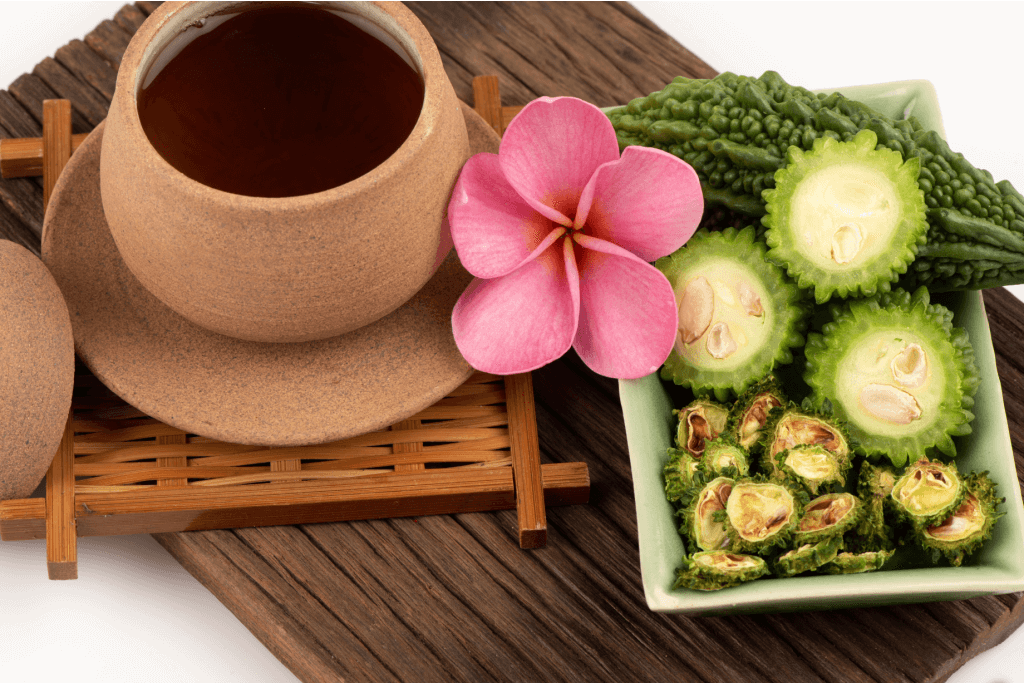
The tea is produced by a lactic fermentation process- processing the Goya (seeds included). Since Goya by itself is very bitter, it is recommended that you soak the tea leaves for about 5 minutes. The longer you boil the leaves, the less bitter the taste will be.
Cat Whiskers Tea
Cat whiskers tea, known as kumisukuchin, derives its name from the Malaysian word for the Kumis Kucing plant. The pistils of the “Cat Whisker” plant closely resemble cat whiskers, giving it the English name. Moreover, people use the stems and leaves of the plant to make tea. The cat whisker plant is believed to have medicinal properties. It can potentially treat diabetes, kidney, and urinary disorders, high blood pressure, and bone or muscular pain. To prepare the tea for three minutes, you can soak the leaves in boiling water. It is common to enjoy this tea with some honey or milk.
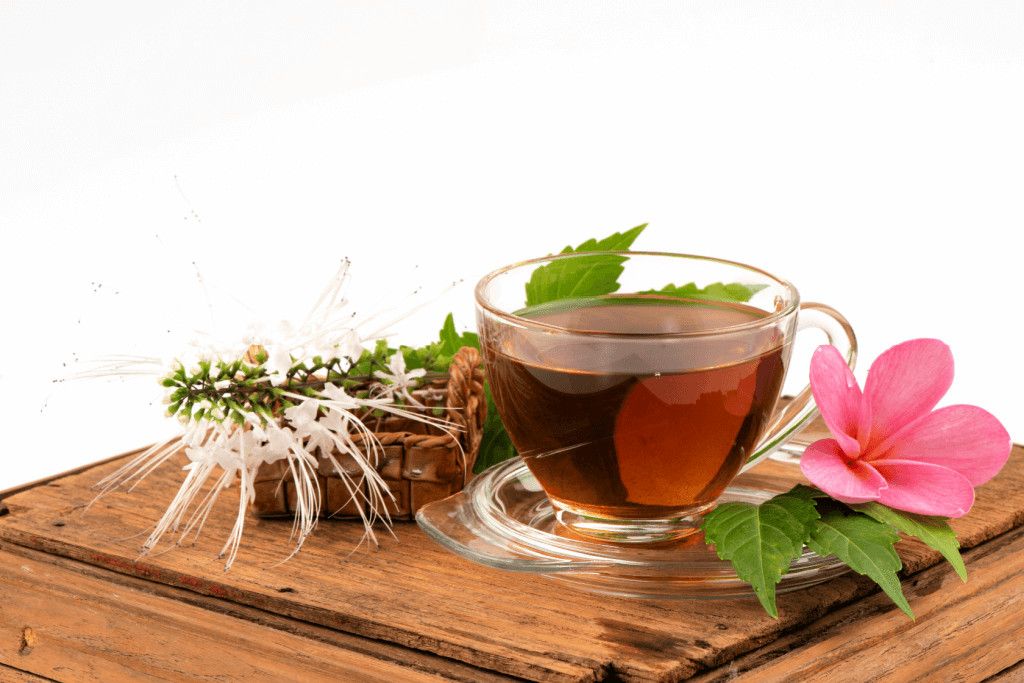
If you want to incorporate a healthy tea into your diet, why not try one from the vibrant region of Okinawa? Adding a cup of Okinawan tea to your routine can make a remarkable difference in your well-being.
With many options available, such as refreshing jasmine tea, fragrant guava, rejuvenating mugwort tea, warming turmeric tea, the unique goya, and delightful cat whiskers tea, there’s something to suit everyone’s taste. Be sure to talk to a medical professional before drinking tea for medicinal purposes. Share your enthusiasm and let us know in the comments which Okinawan tea you’re most eager to experience.

Discover authentic flavors with Sakuraco
Get Sakuraco 

Discover authentic flavors with Sakuraco
Get Sakuraco 
Related Articles

Mochi: How is Mochitsuki Made in Japan?
Mochitsuki is the Japanese tradition of pounding steamed rice to make mochi for the New Year. Families and neighbors gather to participate in this lively and meaningful tradition. The teamwork involved helps everyone feel a sense of connection.

Konpeito Candy: What Makes This Starry Treat Shine?
If you are a fan of the famous Demon Slayer series, then you probably know that the favorite treat of the adorable Nezuko Kamado is those tiny, colorful little sweets.

Kinako: The Amazing Roasted Soybean Powder!
Kinako is a very popular ingredient that can easily be found in many traditional Japanese sweets. It has a distinctive flavor, standing alongside other classic tastes such as red bean or sesame. Let’s explore this charming ingredient together, and who knows, you might even be able to make it in your own beloved kitchen!

Aaron and Claire Make the Ultimate Japanese Pork Belly: Buta no Kakuni
If you want a Japanese dish that’s rich, tender, and simple to follow, Aaron and Claire show exactly how to make it in this episode. Aaron prepares Buta no Kakuni, a classic braised pork belly dish renowned for its rich flavor and tender texture.



